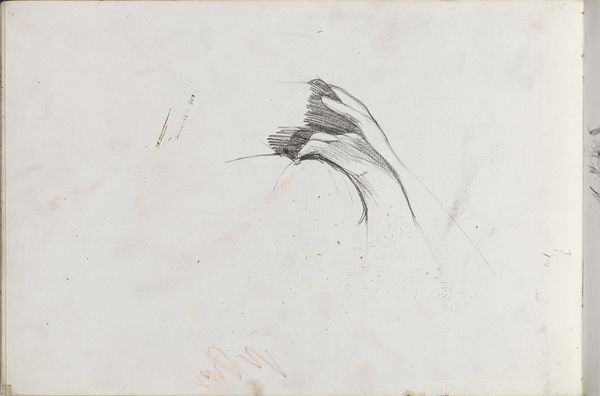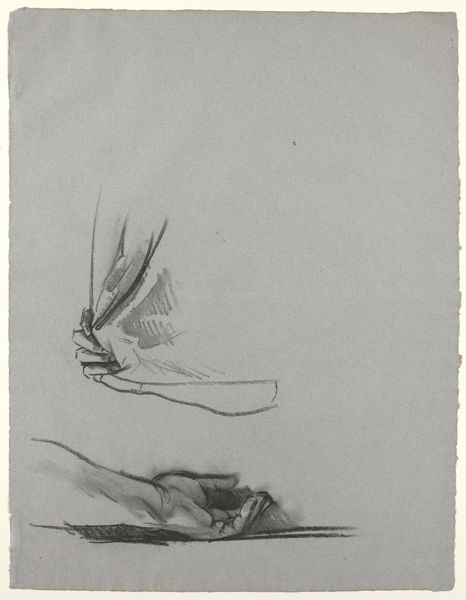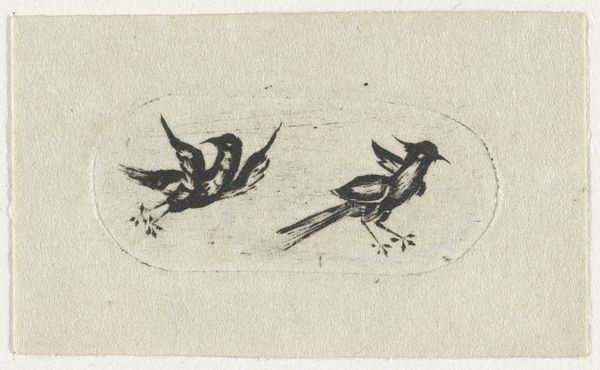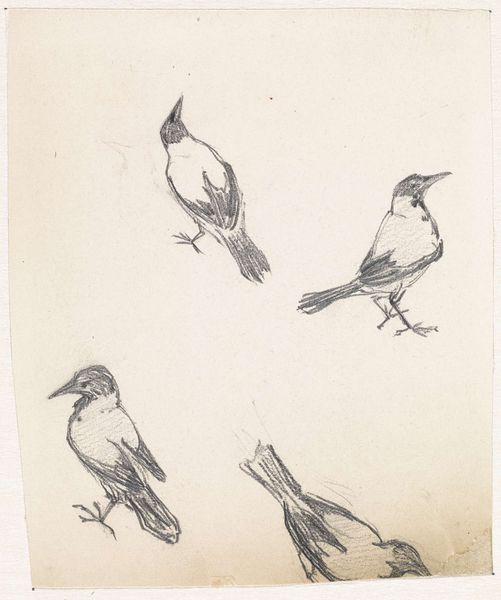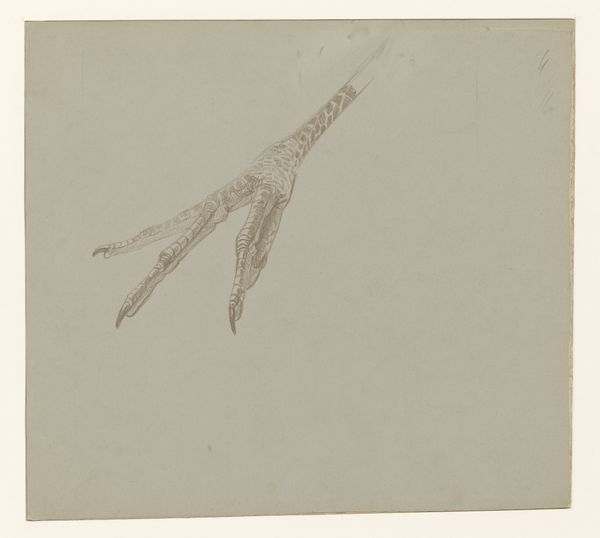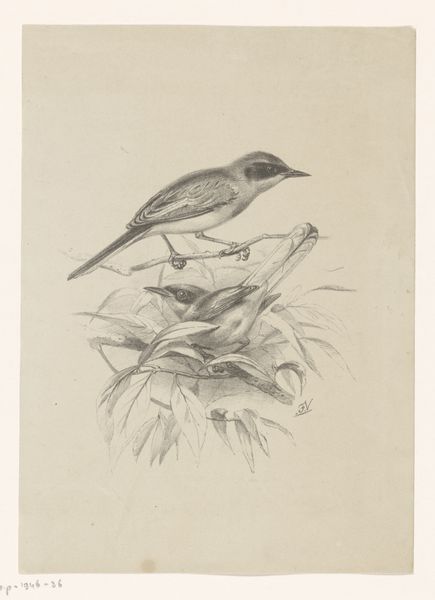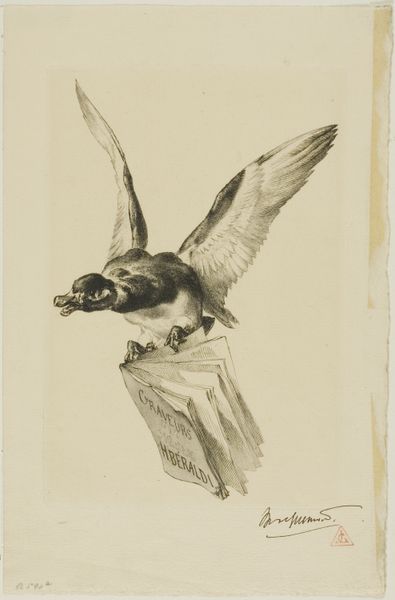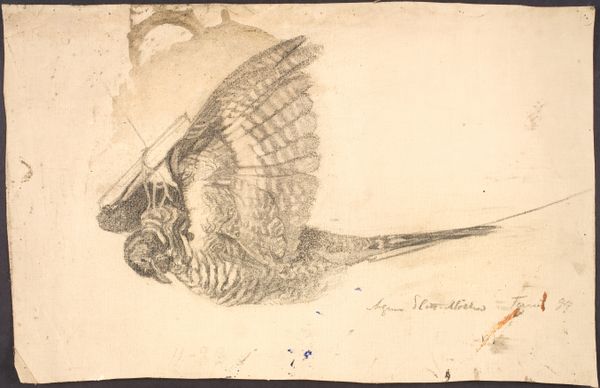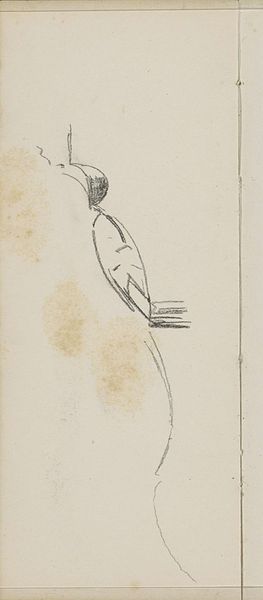
drawing, pencil
#
drawing
#
pencil
#
naturalism
#
realism
Dimensions: height 167 mm, width 230 mm
Copyright: Rijks Museum: Open Domain
Editor: Here we have "Studie van de kop en de poot van een vogel," a study of a bird's head and foot by Balthasar Meisner, dating somewhere between 1894 and 1925. It's a pencil drawing, quite detailed, but the strange shading in the background creates an unexpected contrast with the naturalistic style. What do you make of it? Curator: Well, it certainly presents a fascinating little puzzle, doesn’t it? The first thing that strikes me is the dedicated, almost scientific, approach to depicting the bird. It’s as if Meisner is trying to truly understand the anatomy, to dissect it with his eye and pencil, while also framing it as a portrait in and of itself. But you're right. That upper, rather abstract register is definitely out of character. Does it suggest an atmosphere? Editor: Maybe a birdcage? It's quite an oppressive, grey space above the image, so I wasn't sure. Curator: Perhaps, yes. Or it might be that the artist wants to show two dimensions together, merging a more emotionally loaded piece with an image made in close observation. Consider how realism and naturalism often attempt to capture not just likeness, but something essential about their subject, almost like empathy through artistic precision. What would happen if he pushed that into an abstract mood-scape? What’s he thinking about when observing? What am I? Editor: It almost feels like two artworks on one page: detached analysis mixed with raw feeling. Curator: Exactly! Perhaps it also asks questions about what it means to ‘see’ nature – whether it is purely with the analytical eye or a feeling heart? Thank you, that made me feel more sure about it. Editor: I hadn't thought of that. It makes the study more than just observation. I will try to remember to keep my eyes and heart working together when viewing artworks from now on.
Comments
No comments
Be the first to comment and join the conversation on the ultimate creative platform.
